Heating element in a washing machine

Among all the parts of washing machines, the heating element is one of the key elements. Its breakage makes further operation of the machine impossible, because the program is interrupted and an error appears on the display.
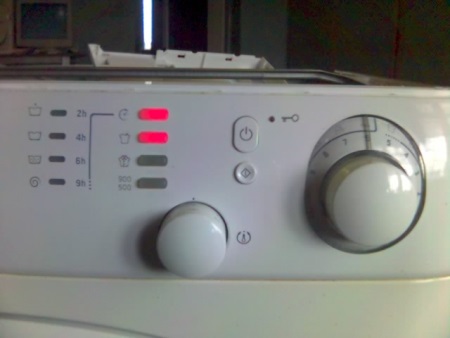
Purpose
Washing machines require only cold water to work, because inside each machine there is a heating element - the heater. Its function is to heat the water inside the tank of the machine to the temperature required for a particular washing program.
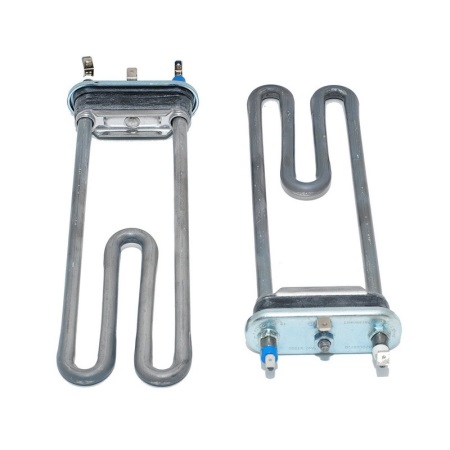
Working principle
The heater in the automatic machine is represented by a tubular part, inside which there is a conductor. This conductor has a high resistance and has the ability to withstand heating to high temperatures.
Around the heating coil is a dielectric which has a high thermal conductivity. It transfers the heat to the outer steel shell of the heating element. The coil of the heater is soldered to the contacts at its ends. On these contacts the supply voltage comes. There is also a thermocouple, which measures the level of heating of the water in the tank.
When you start the washing program, the control unit of the machine sends a command to the heating element, which results in the supply voltage to the heater. The heating element begins to heat up, as a result of which the water temperature in the tank rises.
As soon as its temperature is high enough for the chosen program, the temperature sensor sends data to the control unit, which turns off the heating element, and water heating stops.
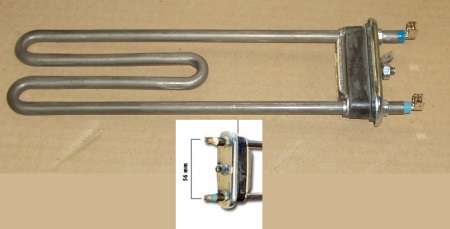
Characteristics
The main parameter of the heater is its power, which can be up to 2.2 kW. The higher this characteristic, the faster the water will be heated in the machine. Since the heating element has inertia and high resistance, this part is not afraid of short-term changes in the mains voltage. Resistance of the THEN in the normal range from 20 to 40 ohms, depending on the power of the part.
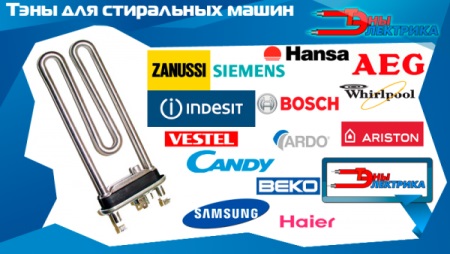
Where is it located?
In most models of the machine, the heater is located at the bottom, and you must remove either the front or back cover to get to it. There are also some models that have the heating element on the side, and you have to remove the side panel to check and replace it.
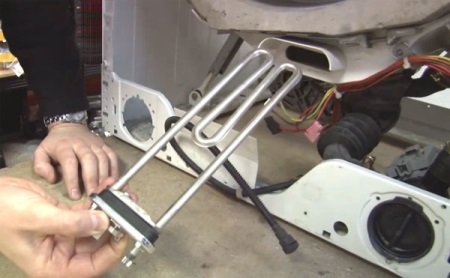
Why does the heating element break?
The main causes of heater failure are:
- Factory defect. No buyer is immune from it, and if the device is still under warranty, it is sent to the service center for the replacement of the heating element.
- Scale on the surface of the heating element. This is the most common cause of heater failure. Scale deposited on the metal body of the part, due to its poor thermal conductivity prevents the transfer of heat from the heating element to the water. In this case, the heating element itself overheats and burns out. In addition, the scale provokes the appearance of corrosion on the surface of the heating element, which leads to a breach of tightness of its metal shell and provokes a short circuit.
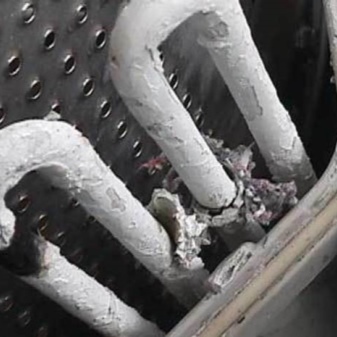
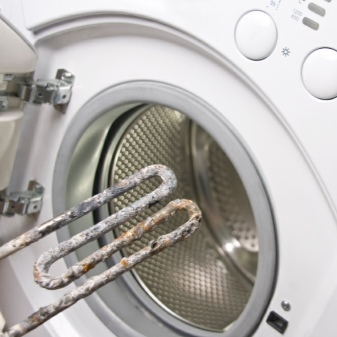
Tips for choosing a new heating element
The heaters for the washing machine come in different shapes. The most common are W- and U-shaped heaters. There are also heaters in the form of a spiral.
The second difference between heaters in different models of machines is the method of connection and attachment. Different TEHs may have different fasteners (often this is a fitting, the diameter of the flange which varies) and different shape of the terminals.
The design of the heating elements may also include fuses (they trip in case of overheating) and temperature sensors. All of these features make it difficult to choose the right heating element.
It is also important to choose a new heating element with exactly the same capacity as the defective dismantled part. Thus, you can be sure that the washing program will be carried out correctly, and the water in the tank will heat at the correct speed.
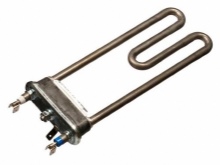
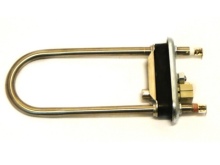
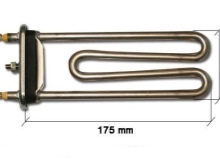
It is best to find a similar part, which has the same terminals and the same fasteners as the burned out heater. Otherwise, there may be difficulties in connecting the heating element to the wires and the need to seal the place where the new heater was installed. Such problems are often encountered by owners of old washing machines that have long been discontinued.
Where to buy?
Having decided to repair the machine with their own hands, the user is faced with the need to buy parts for the machine, but in a regular store the heating element and other elements of such equipment are not sold. You can order a new heater through a service center, but expect a rather high surcharge. A better and easier way to get the right part will be to order in a specialized online store that sells parts for washing machines. In this case, the search for the right heater should be based on the model of your machine.
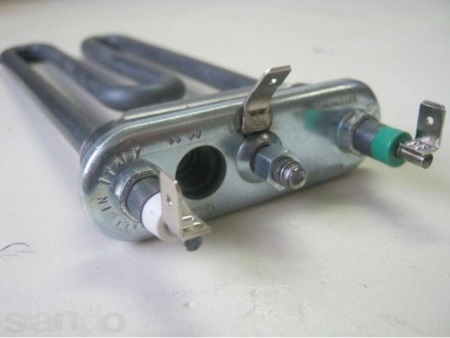
What does the life of the heater depend on?
Different factors affect the life of the heater. This is the brand of the machine manufacturer, which directly affects the quality of parts of the machine, and the frequency of use of technology, and the most frequent washing program, and, of course, the hardness level of the water that is used for washing. The more often the machine is used, the higher the washing temperature is set, and the harder the water is, the less the heating element will serve. The average lifespan of such a part is 2-10 years.

Heating element replacement
In order to independently replace the heating element in the washing machine, you do not need to be a jack of all trades. Almost anyone with an idea of what a heating element is can do it. Replacing the heating element in a washing machine was discussed in detail in another article.
In the following video, Vladimir Khatuntsev will show how to replace the heating element in an LG washing machine.
Prevention of breakdowns
The basis of prevention of problems with the heating element should be the fight against the formation of limescale. If the water coming into your home is hard (and you can see this not only by the condition of the heating element, but also by the appearance of scale in the kettle, in the toilet and other places), be sure to take measures to soften it.
Also with high water hardness try to avoid unnecessary activation of washing programs which require heating water to +60º C and above. If, however, scale has already appeared, you can remove the heater and clean it with descaler.
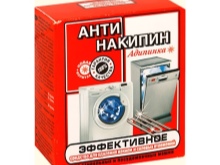

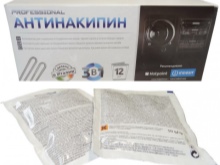
Every 3-4 months it is recommended to clean the heating element from scale with citric acid. In the following video Larissa Shkurpela will show how she does it herself at home.




